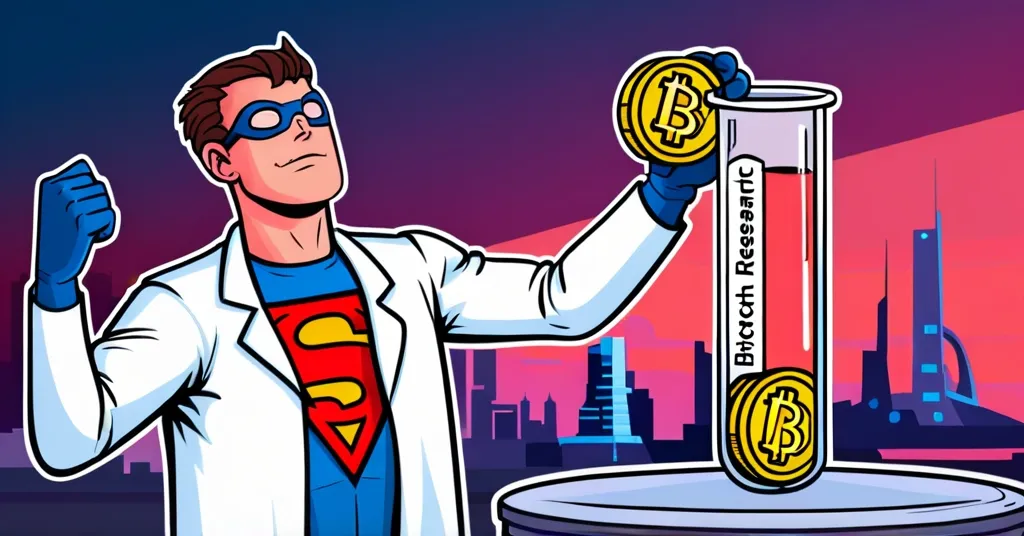Vitalik Buterin Turns $2.5M in Meme Coins into Biotech Charity Funding

Vitalik Buterin Converts $2.5M in Meme Coins to Fund Biotech Charity Kanro
Vitalik Buterin, the mastermind behind Ethereum, has turned $2.5 million in meme coins into a lifeline for biotech research through his charity, Kanro. Selling a diverse portfolio of 28 meme coins, Buterin’s move not only underscores his commitment to advancing biotechnology but also reflects his broader impact on the crypto community through philanthropy and Ethereum’s development.
- Vitalik Buterin sold 28 meme coins for $2.5M
- Funds directed to Kanro biotech charity
- Transactions executed via DeFi platforms
- Encourages direct donations to charities
On January 6, Buterin made the smart decision to sell 28 different meme coins, raking in nearly $1 million in USDC (a stablecoin pegged to the US dollar) and a total of $2.5 million. He converted these funds into USDC and ETH (Ethereum’s native cryptocurrency). This isn’t just a random act of generosity; it’s part of Buterin’s ongoing strategy to use unsolicited meme coin gifts for the greater good.
The meme coins sold were a wild mix, including CULT, DOGE, SHIB, and even tokens themed around celebrities like Elon Musk. To pull off these trades, Buterin turned to DeFi platforms like CoW Swap, Uniswap, Kyber Network, and Odos. DeFi platforms allow users to trade cryptocurrencies directly without a central authority, and they played a crucial role here. But, hold onto your hats: the sale of the meme coin DINU led to a whopping 68% drop in its value, reminding us that meme coins can be a rollercoaster ride.
Buterin then directed these proceeds to Kanro, his biotech fund established in 2023, aimed at pushing the boundaries of biotechnology research. This initiative is just one piece of Buterin’s larger puzzle of philanthropy, which also includes donations to privacy-focused charity RiseUp and past contributions of over $60 million in SHIB for various research initiatives. In the wild west of meme coins, Buterin is the sheriff using his earnings for the greater good, not just buying more dog-themed tokens.
Buterin’s wallet, vitalik.eth, currently holds nearly $1 billion in assets, primarily over 240,000 ETH valued at around $873 million. This shows how important he is within the Ethereum ecosystem. He’s also vocal about encouraging communities to form DAOs (Decentralized Autonomous Organizations) and make direct donations to charitable causes, emphasizing the ethos of decentralization and community-driven initiatives.
Beyond his charitable endeavors, Buterin remains deeply involved in Ethereum’s development. He has endorsed updates like Optimism’s SuperchainERC20 and proposed reducing Ethereum’s staking requirement from 32 ETH to 16 ETH, with a long-term goal of lowering it to 1 ETH. These efforts are crucial for improving Ethereum’s scalability and accessibility, reflecting Buterin’s commitment to the platform’s long-term viability and growth.
While the crypto world is often seen as a playground for speculation, Buterin’s actions highlight its potential for real-world impact. His use of DeFi platforms for these significant transactions underscores the growing ecosystem that allows such moves to happen.
However, it’s not all sunshine and rainbows. The volatility and speculative nature of meme coins can lead to significant risks, as the sale of DINU and its subsequent price drop shows. While Buterin’s strategic use of these funds for philanthropy is commendable, it’s a reminder that meme coins are a gamble. Yet, his actions also showcase how these assets can be put to positive use.
In the spirit of “effective accelerationism” (e/acc), Buterin’s efforts to disrupt the status quo and champion decentralization, freedom, and privacy resonate deeply with the crypto community. His work with Ethereum and his charitable initiatives exemplify how blockchain technology can drive meaningful change, even as challenges and risks remain.
While this article focuses on Buterin’s contributions to Ethereum and his philanthropy, it’s worth noting that Bitcoin remains a cornerstone of the broader crypto ecosystem. Buterin’s actions resonate with the ethos of disrupting the status quo, a common thread with Bitcoin maximalism. Yet, projects like Ethereum, Solana, and Algorand all play vital roles in the evolving blockchain landscape, each filling unique niches.
Looking forward, Kanro’s specific goals could have a profound impact on biotechnology research. By funding research into areas like genetic engineering and disease treatment, Kanro could help unlock new scientific breakthroughs, potentially improving countless lives.
Key Takeaways and Questions
- What did Vitalik Buterin use the proceeds from meme coin sales for?
He used them to fund his biotech charity, Kanro, aimed at advancing biotechnology research, and other charitable causes like RiseUp.
- How much did Buterin’s recent meme coin transactions amount to?
The total transactions amounted to approximately $2.5 million.
- What platforms did Buterin use to liquidate his meme coins?
He used platforms like CoW Swap, Uniswap, Kyber Network, and Odos.
- What impact did Buterin’s sale of meme coins have on their market value?
The sale of the meme coin DINU led to a 68% drop in its value.
- What other charitable initiatives has Buterin supported with meme coin sales?
He has supported initiatives like donations to RiseUp, the Khao Kheow Open Zoo, and campaigns like “Free Alexey & Roman” for Tornado Cash developers.
- What is Buterin’s stance on direct donations to charity?
He encourages communities to form DAOs and make direct donations to charitable causes, as stated in his tweet.
- How is Buterin contributing to Ethereum’s development?
He has endorsed Optimism’s SuperchainERC20 update and proposed reducing Ethereum’s staking requirement from 32 ETH to 16 ETH, with a long-term goal of lowering it to 1 ETH.
“Anything sent to me gets donated to charity, but I prefer if you donate directly.” – Vitalik Buterin



